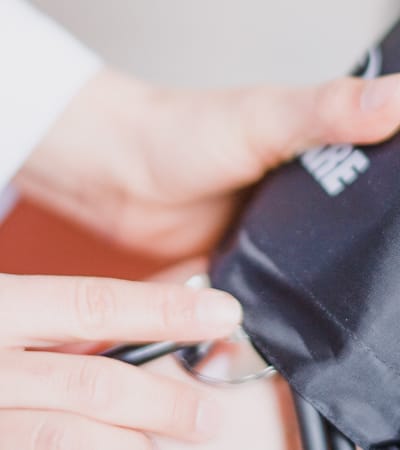Procedures




We’re Ready to Treat Your GI Condition with Effective Procedures & Treatments
Our Digestive Health Institute specialists can perform a range of GI surgical procedures designed to help you address your GI condition. We also provide an array of nonsurgical treatment options. Ready to start addressing your GI condition?
Procedures We Offer
EGD
Upper endoscopy, also known as an upper GI endoscopy, esophagogastroduodenoscopy, EGD and panendoscopy, is a procedure that enables your physician to examine the lining of the upper part of your gastrointestinal tract, i.e., the esophagus or swallowing tube, stomach, and duodenum or first portion of the small intestine using a thin flexible tube with its own lens and light source.
Flexible Sigmoidoscopy
Flexible sigmoidoscopy is a procedure that enables your physician to examine the lining of the rectum and a portion of the colon (large bowel) by inserting a flexible tube that is about the thickness of your finger into the anus and advancing it slowly into the rectum along the length of the lower part of the colon.
Capsule Endoscopy
Simply requiring a 12-hour fast along with prescription colon prep prior to the procedure, the Capsule Endoscopy procedure begins when the patient swallows the capsule with a small amount of water. Data and images are transmitted as the capsule passes through the digestive system and are received by the data recorder affixed to a belt worn by the patient.
After approximately eight hours, the patient returns the Data Recorder to our office for processing by a dedicated computer workstation. The computer’s RAPID® Application Software enables us to view and analyze the resulting patient video report.
Robotic Transanal Surgery
Robotic Transanal Surgery is a minimally invasive surgical technique that allows the surgeon to operate on problems in the mid and upper rectum without having to make an incision through the abdomen. The instruments are specially designed so that the procedure can be performed through the anus and in the rectum.
Endoscopic Retrograde
ERCP is a specialized technique used to study the ducts (drainage routes) of the gallbladder, pancreas and liver. An endoscope (flexible thin tube that allows the physician to see inside the bowel) is passed through the mouth, esophagus and stomach into the duodenum. After the opening to ducts from the liver and pancreas is identified, a catheter is passed through the endoscope into the ducts. Contrast material is then injected gently into the ducts and x-ray films are taken.
Colonoscopy
Colonoscopy is a procedure that enables your physician to examine the lining of the colon (large bowel or large intestine) for abnormalities. A flexible tube that is about the thickness of your finger is inserted into the rectum and advanced along the length of the colon.
Robotic Colon Surgery
Robotic colon surgery is a minimally invasive type of surgery, in which a surgeon is able to operate via a few small incisions with the assistance of a robotic device. Commonly referred to as laparoscopic surgery, a robotic surgical system utilizes tiny instruments and cameras to give the surgeon a high definition view of the operating site, as well as translating the surgeon’s movements into smaller, precise movements. Many common colon and rectal procedures can utilize this method.
Minimally Invasive Surgery
Capitol Colorectal Surgery is the only sub-specialty practice in mid-Michigan that regularly performs minimally invasive surgery for diseases of the colon and rectum. Our practice uses up to date minimally invasive techniques including robotic and laparoscopic approaches.
EUS/Rectal EUS
After spraying a solution to numb the patient’s throat, the doctor inserts an endoscope—a thin, flexible, lighted tube—down the throat, through the stomach, and into the small intestine. The doctor turns on an ultrasound attachment to the scope that produces sound waves to create visual images of the pancreas and bile ducts.
Ostomy
An ostomy, or stoma, is a surgically created opening between the intestines and the abdominal wall. Ostomies can be temporary or permanent.
Liver Biopsy
A liver biopsy is a procedure that involves taking a small piece of liver tissue for examination with a microscope for signs of damage or disease. The three types of liver biopsy are the following:
- Percutaneous biopsy—the most common type of liver biopsy—involves inserting a hollow needle through the abdomen into the liver. The abdomen is the area between the chest and hips.
- Transvenous biopsy involves making a small incision in the neck and inserting a needle through a hollow tube called a sheath through the jugular vein to the liver.
- Laparoscopic biopsy involves inserting a laparoscope, a thin tube with a tiny video camera attached, through a small incision to look inside the body to view the surface of organs. The health care provider will insert a needle through a plastic, tubelike instrument called a cannula to remove the liver tissue sample.
Laparoscopic Colon Surgery
A technique known as minimally invasive laparoscopic colon surgery allows surgeons to perform many common colon procedures through small incisions. Depending on the type of procedure, patients may leave the hospital in a few days and return to normal activities more quickly than patients recovering from open surgery.
In most laparoscopic colon resections, surgeons operate through 4 or 5 small openings (each about a quarter inch) while watching an enlarged image of the patient’s internal organs on a television monitor. In some cases, one of the small openings may be lengthened to 2 or 3 inches to complete the procedure.
Frequently Asked Questions
What happens when I see the provider in the office?
If you haven’t visited Digestive Health Institute previously, you can expect to complete a new patient physical exam. The care provider will ask you about your medical history along with your current condition, and any other relevant concerns they may have. We ask that patients who are taking medication bring a completed medical history form along with them to their in-office appointment. Once you see the provider in the office, your provider will help you come up with a treatment plan.
What can I expect when I get a procedure done?
Your physician will review with you the reason for your procedure, if you have completed procedural preparation properly, and what the procedure will entail. You will also be handed written information with the same information and risks associated with the procedure. We highly encourage patients to speak with their physician or nurse regarding any questions or concerns they may have before the procedure. If you’re given anesthesia, it’s your responsibility to ensure that you have a means of getting home safely. We do not recommend transporting yourself home after a procedure involving anesthesia.
Will Digestive Health Institute accept my insurance?
We accept payment from most major health insurance companies including Medicare, Blue Cross/Blue Shield, Blue Care Network, Physicians Health Plan, Cofinity, Sparrow Professional Health Network, Medicaid, McLaren, Health Plus and several others. The insurance companies we accept may change at any time without notice. You must confer with our office during each visit to see if your insurance is accepted. If your insurance requires an authorization from your primary care physician, you may be asked to assist us in obtaining this authorization. All patients are responsible for all copays and deductibles at the time of service.
If you have any questions regarding your benefits or insurance coverage, please contact our Billing Department at 517-332-1200 and press “6.”
How do I get my test results?
Test results become available to you after 10 to 14 business days. You may access your results once they become available by calling 517-332-1200 and pressing “8.″ Your call will be directed to the triage nurse.
